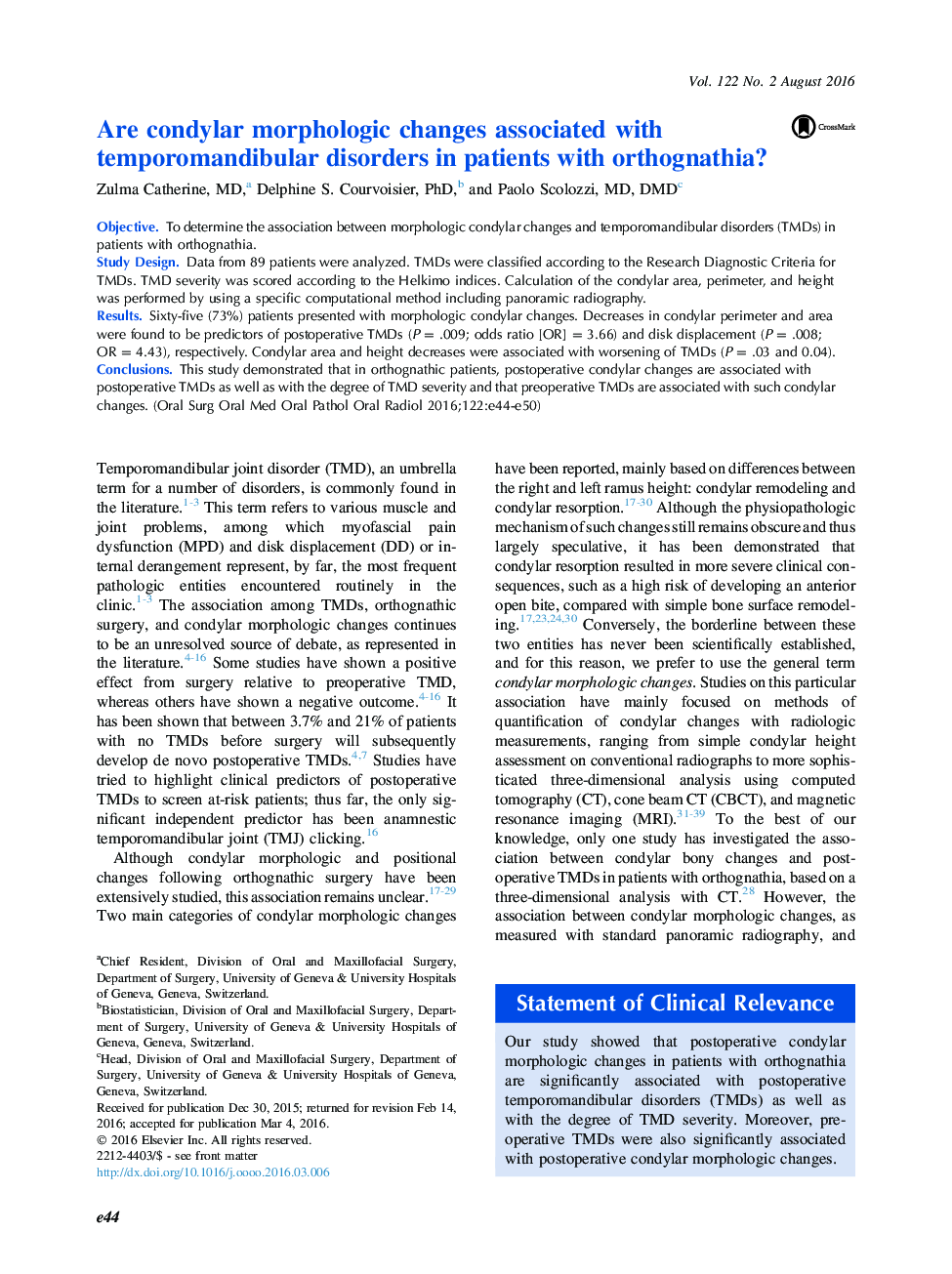| Article ID | Journal | Published Year | Pages | File Type |
|---|---|---|---|---|
| 3166364 | Oral Surgery, Oral Medicine, Oral Pathology and Oral Radiology | 2016 | 7 Pages |
ObjectiveTo determine the association between morphologic condylar changes and temporomandibular disorders (TMDs) in patients with orthognathia.Study DesignData from 89 patients were analyzed. TMDs were classified according to the Research Diagnostic Criteria for TMDs. TMD severity was scored according to the Helkimo indices. Calculation of the condylar area, perimeter, and height was performed by using a specific computational method including panoramic radiography.ResultsSixty-five (73%) patients presented with morphologic condylar changes. Decreases in condylar perimeter and area were found to be predictors of postoperative TMDs (P = .009; odds ratio [OR] = 3.66) and disk displacement (P = .008; OR = 4.43), respectively. Condylar area and height decreases were associated with worsening of TMDs (P = .03 and 0.04).ConclusionsThis study demonstrated that in orthognathic patients, postoperative condylar changes are associated with postoperative TMDs as well as with the degree of TMD severity and that preoperative TMDs are associated with such condylar changes.
